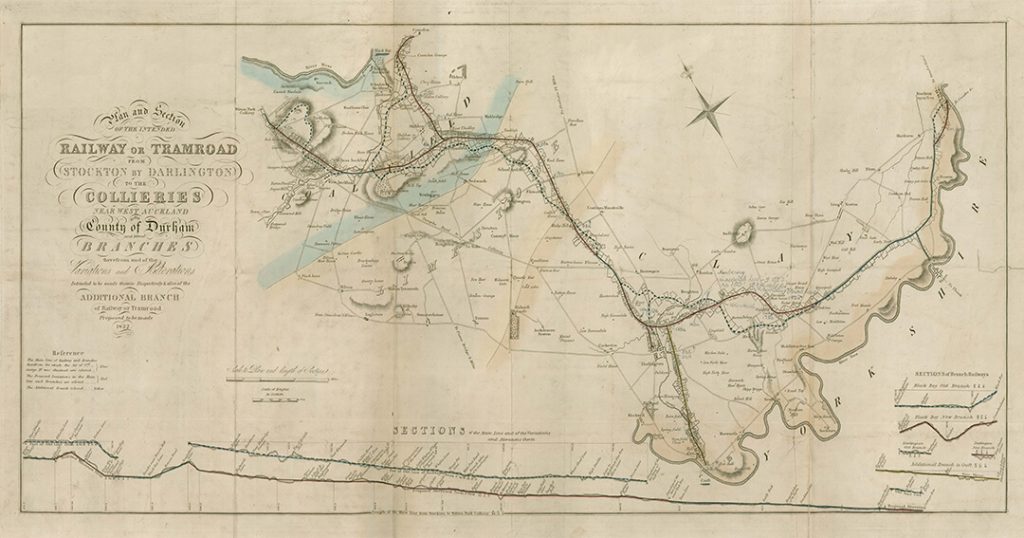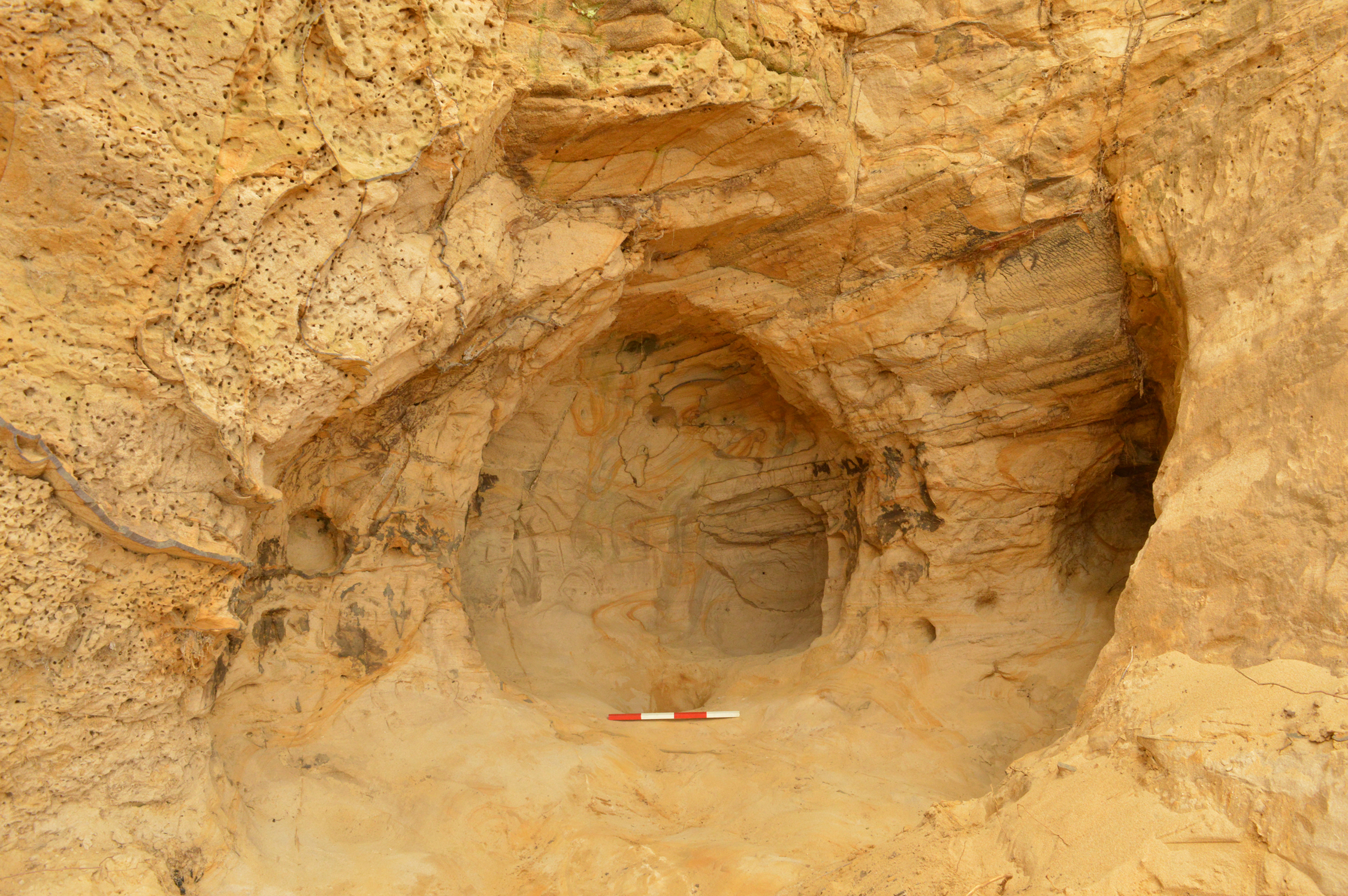We’re proud to be the custodian of a railway so rich in historic buildings, tunnels and viaducts. It’s home to lots of surprises – here are just seven of them:
1 – 14th century cave
In April 2019, we shared how a team of rail workers repairing a landslip near Guildford in Surrey had uncovered a small cave believed to be from the 14th century.
The sandstone cave comprises several sections ranging from 0.3 metres to about 0.7 metres high. It may once have been much larger but only this small piece survived the digging of the railway cutting through the hill in the early 1840s.
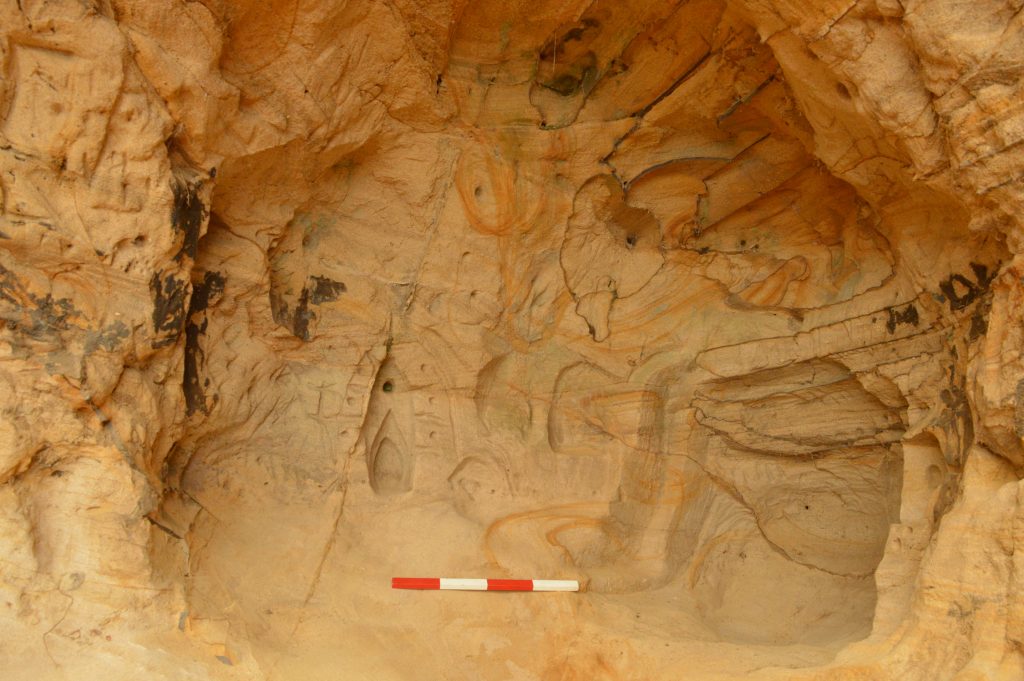
Initial findings by a specialist archaeological contractor suggest it was a later Mediaeval shrine or hermitage associated with the early 14th century chapel of St Catherine, the ruins of which sit on a hill nearby. It may even have earlier origins as a site of cult activity, due to its pre-14th century name of Drakehill – ‘Hill of the Dragon’.
Images taken from the site show the presence of a Gothic niche decorated in dots with a Calvery cross nearby.
There were a total of around seven or eight further niches and experts found considerable evidence of writing and other markings across the cave ceiling. The cave was partially covered in deposits of black dust, believed to be soot from lamps. The remains of two suspected fire-pits were also uncovered in the cave floor.
Mark Killick, route director of our Wessex route, said: “This is an unexpected and fascinating discovery that helps to visualise and understand the rich history of the area.
“A full and detailed record of the cave has been made and every effort will be made to preserve elements where possible during the regrading of the delicate and vulnerable sandstone cutting.”
Tony Howe, historic environment planning manager and county archaeologist at Surrey County Council, said: “The discovery of this cavern is tremendously exciting. It’s very early in the process of understanding its full significance, but the potential for knowledge acquisition is huge.”
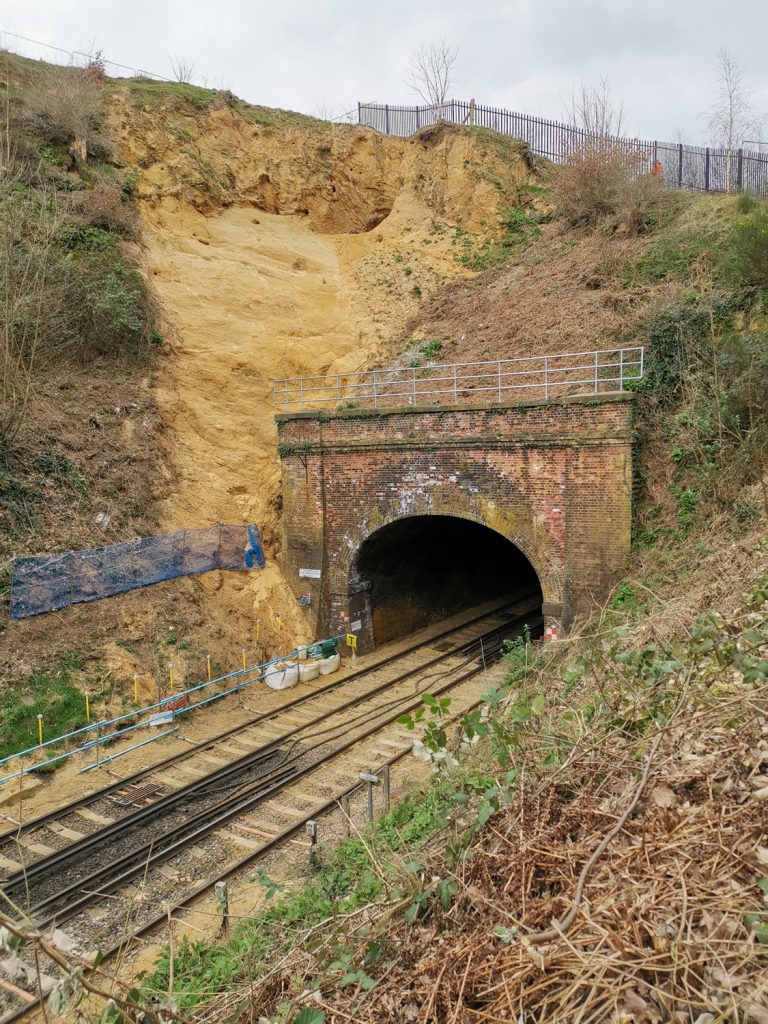
Educational resources for children learning at home
Film: Discover the Network Rail archive
Read the George Stephenson notebook online
Step back in time… and inside Britain’s busiest signal box
2 – Victorian roundhouse unearthed in Birmingham
In March 2019, engineers unearthed what was thought to be the world’s oldest railway roundhouse at the construction site of the new Birmingham Curzon Street station.
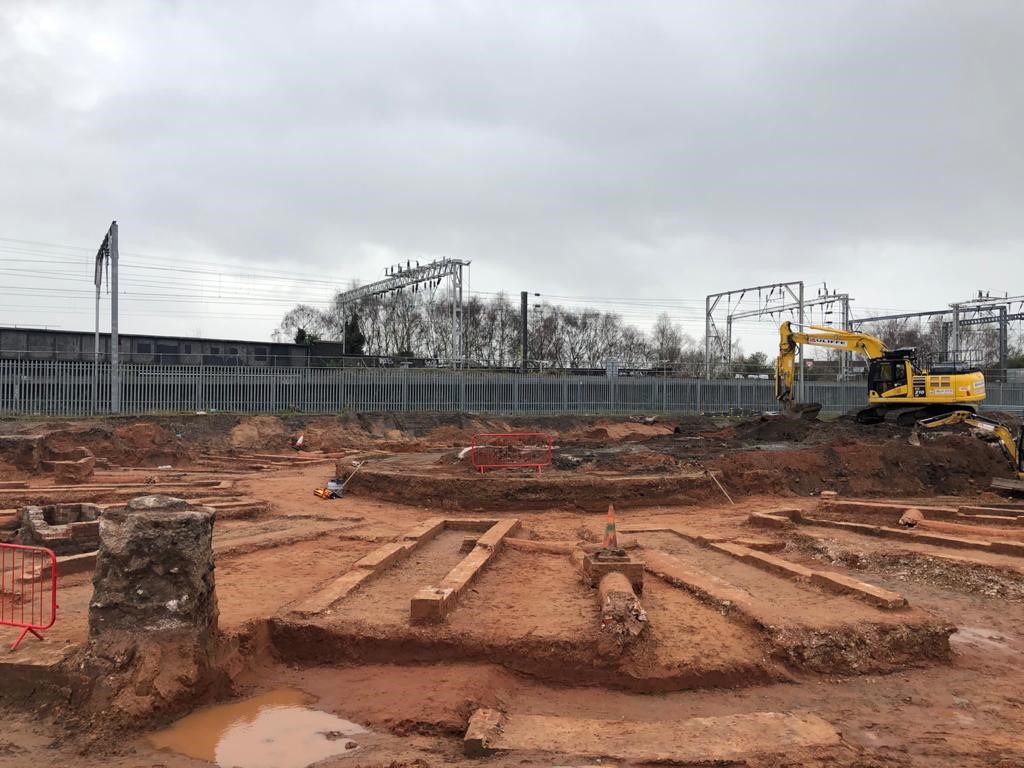
HS2, the new high-speed railway, said in a statement that the roundhouse sat adjacent to the old Curzon Street station – the first railway station serving the city centre. The turntable within the roundhouse would turn around the engines so trains could go back down the line. The roundhouse also stored engines, where they were serviced.
It said the railway was “built during a period of great significance and growth for the city. Built to a design by the 19th century engineer Robert Stephenson, the roundhouse was operational on 12 November 1837 – meaning the recently discovered building is likely to predate the current titleholder of ‘world’s oldest’ in Derby by almost two years.”
It said the railway’s 1847 roundhouse at the southern end of the line is today better known as the famouse Roundhouse music venue in Camden, London.
Anthony Blakeway, a track maintenance technician at Network Rail working at the site at the time of the discovery, said: “[The dig was]on what was effectively waste ground also a burial site from an old graveyard from what we have seen in the past few months so hopefully they will try to uncover the second roundhouse that the old plans show but over the years it’s probably already been dug out and removed.”
Visit Warwickshire Railway’s website to see drawings that show the location of the roundhouse and here to read the full story.
Gallery: the Curzon Street turntable
3 – Lost artefact found on eBay
A missing piece of railway history returned to its rightful place – thanks to cunning detective work by a retired train driver and his transport police pal.
The Manchester & Birmingham Railway plaque – a high-quality replica of the 1839 original – re-emerged last year, having disappeared 17 years earlier.
It was erected at the new Manchester Piccadilly station in the mid-1960s. The plaque was removed in 1998 when an upgrade began at the station but never reappeared when the work ended in 2002.
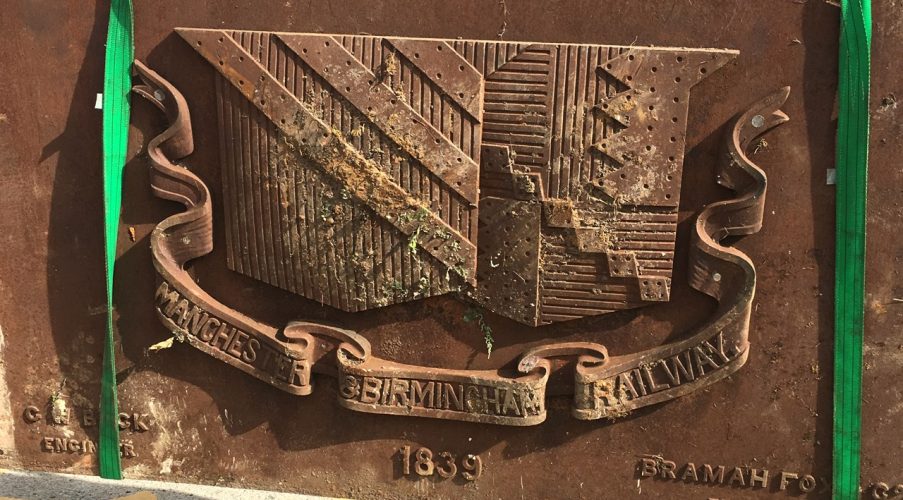
Eagle-eyed railway enthusiast Mel Thorley, 72, then a train driver, immediately noticed the sign was missing. Mel, from Stockport, Greater Manchester, never gave up hope and in August 2019, spotted a curious eBay listing.
The missing plaque was up for sale for £3,700. The sales blurb recommended a forklift to load it on to a truck on collection from a location in Nottinghamshire.
Mel said: “When I spotted it on eBay I couldn’t believe my eyes. I checked with Dave, my ex-copper friend, who said ‘I know that plaque. It’s the missing one!'”
Find out how Mel helped return the plaque to its home on the railway.
4 – Brunel’s workshops
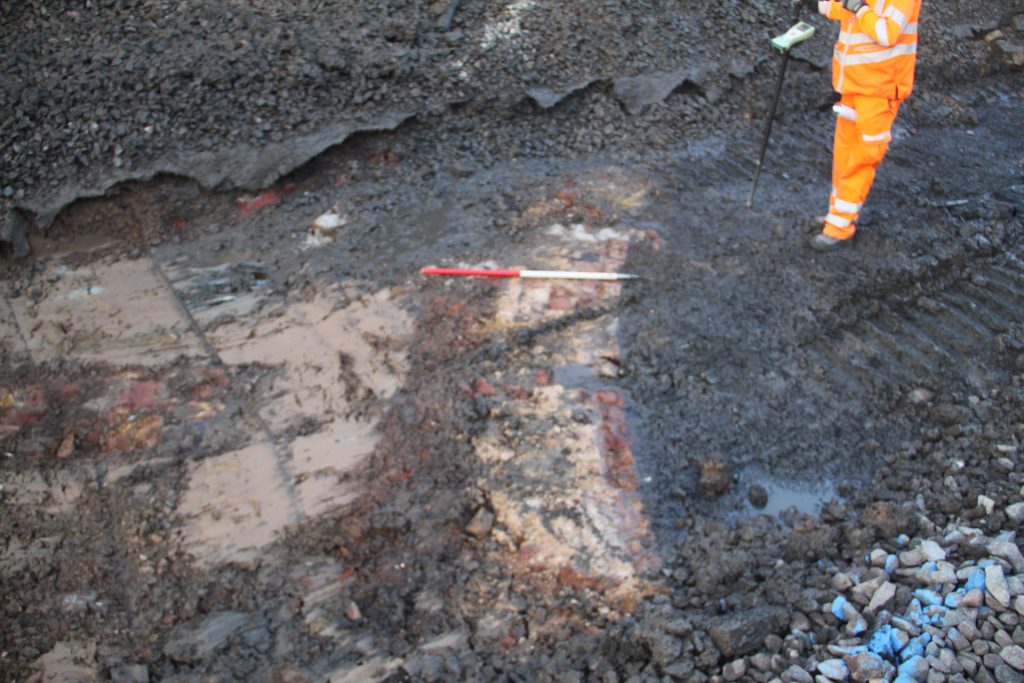
In 2016, we unearthed historic remains of Isambard Kingdom Brunel’s engineering workshops during Crossrail project construction works near London Paddington station.
At Paddington New Yard, we found the remains of a very rare and early, steam-powered turntable, which was built to accommodate Brunel’s controversial wide-gauge tracks. We also uncovered several important buildings thought to be Brunel’s engineering workshops.
Previous Crossrail archaeological investigations to the north of the site had confirmed that Brunel – one of the world’s most revered and influential engineers – had used the area. However, much of the location of his workshops lay beneath the modern railway so their survival was uncertain.
5 – First settlement at London Bridge
In 2014, we discovered hundreds of historic artefacts during excavations under the ancient arches of London Bridge station, which in 2018 completed a £1bn transformation.
Findings included a wide range of everyday objects that gave an insight into the area’s first settlement:
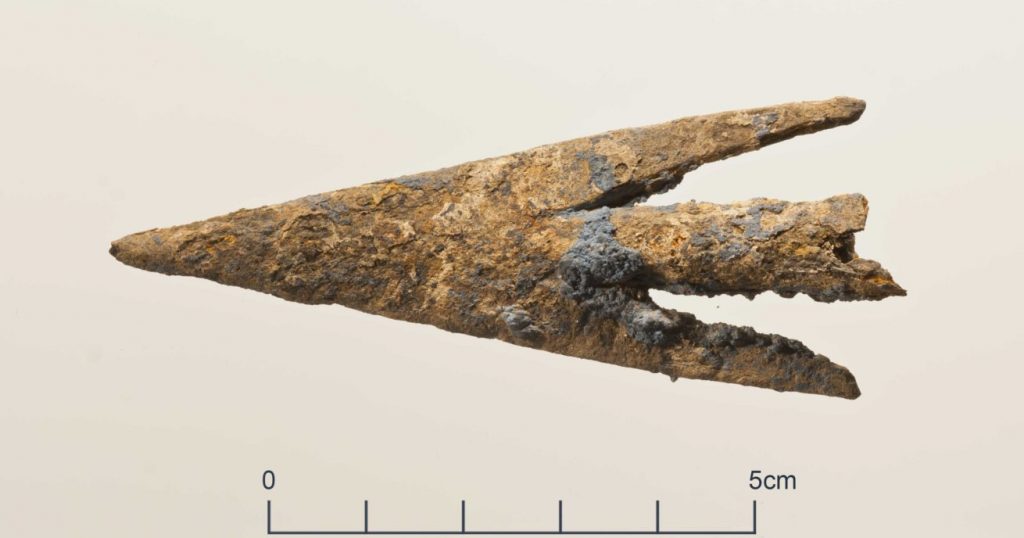
- Timber piles built from trees felled between AD59 to AD83, which possibly formed part of a larger waterfront building on the edge of the settlement.
- A Mediaeval wall and floor fragments that may have been part of large houses on Tooley Street – these belonged to important clerics like the Prior of Lewes.
- Kilns for making clay tobacco pipes, dating from the 16th to 18th centuries.
6 – Major Roman find at Borough Viaduct
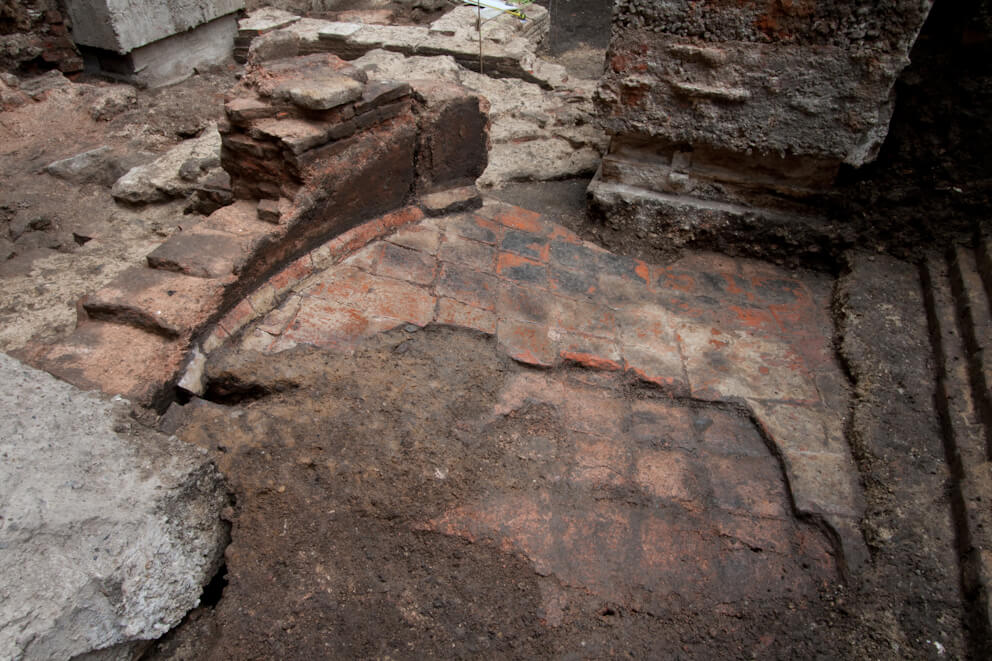
One of the biggest Roman finds in London on the south side of the River Thames. Archaeological work during construction of the Borough Viaduct in 2011 uncovered an array of remains from the Roman, Saxon, Mediaeval and more recent periods. The discoveries, made during the £6.5bn Thameslink Programme to transform London travel, provided a fascinating insight into the formation and growth of the ancient settlement at Southwark.
Some of the most exciting finds included:
- Traces of early Roman military occupation
- Evidence for the Boudican revolt
- A Roman bathhouse under Borough High Street, that was previously unknown
- Substantial evidence for the Saxon and Mediaeval defences of the settlement
- The remains of townhouses belonging to important medieval clerics and the St. Saviour’s and Park Street burial ground.
7 – Incredible Stephenson railway history
For the first time, members of the public were able to see detailed plans by George Stephenson – known as the father of the railways – for the world’s first passenger railway to use locomotives.
The notebook, dated 1822, was found by John Page, a records assistant at Network Rail’s archive in York. It outlines Stephenson’s redesign of and budget for the Stockton and Darlington Railway, and became the blueprint for the railways that followed.
